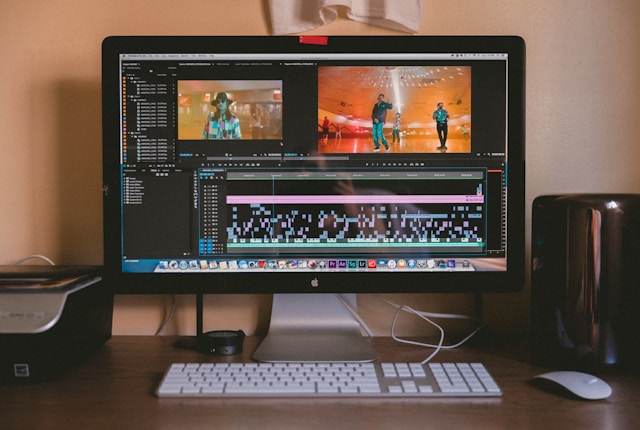Video editing is the process of manipulating and rearranging video footage to create a cohesive and engaging final product. It involves assembling raw video clips, adding transitions, visual effects, sound effects, music, and other elements to tell a story or convey a message effectively. Video editing is a crucial stage in the post-production process of filmmaking, television production, vlogging, advertising, and other forms of video content creation.
Here’s an overview of what video editing typically involves:
- Importing Footage: The first step in video editing is importing the raw video footage into video editing software. This footage may come from various sources, such as digital cameras, smartphones, or external recording devices.
- Organizing Footage: Once the footage is imported, it needs to be organized and categorized to facilitate efficient editing. This may involve creating bins, folders, or timelines to keep track of different shots, scenes, or sequences.
- Assembly: The editor selects the best takes and arranges them in the desired sequence to tell the story or convey the intended message. This involves cutting, trimming, and rearranging clips on the timeline to create a cohesive narrative flow.
- Transitions: Transitions are used to smooth the cuts between different shots and scenes. Common types of transitions include cuts, fades, dissolves, wipes, and fades to black. Transitions help maintain continuity and enhance the overall visual appeal of the video.
- Visual Effects: Depending on the style and requirements of the video, visual effects may be added to enhance the footage. This can include color grading, visual filters, text overlays, motion graphics, green screen compositing, and other effects to add polish and visual interest.
- Audio Editing: Sound plays a crucial role in video editing. The editor may adjust audio levels, mix multiple audio tracks, add background music, sound effects, and dialogue to enhance the auditory experience of the video.
- Review and Revision: Throughout the editing process, the editor reviews the work in progress, solicits feedback from collaborators or clients, and makes revisions as necessary to refine the video and meet the desired objectives.
- Exporting: Once the editing is complete, the final video is exported from the editing software into a format suitable for distribution. This may involve choosing the appropriate file format, resolution, and compression settings depending on the intended delivery platform and audience.
Video editing requires creativity, technical skills, attention to detail, and a good understanding of storytelling principles. It’s a collaborative process that often involves close communication between the editor, director, producers, and other members of the production team to achieve the desired outcome.
Created by Dream India Production


